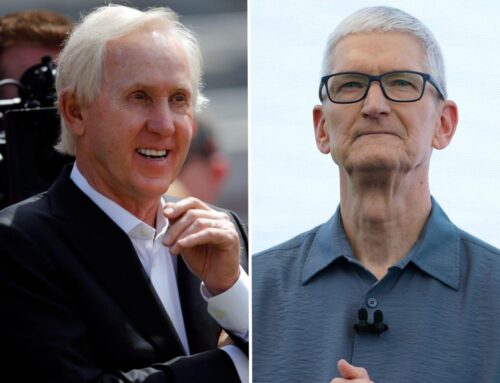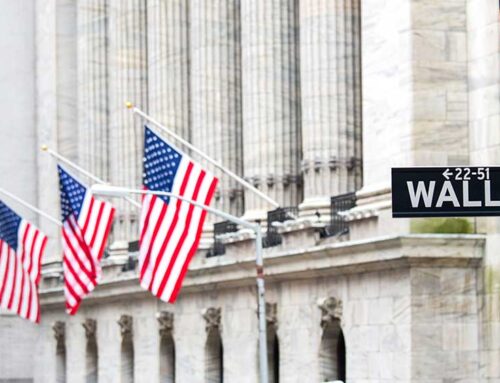Bitcoin Meets Sunshine: SolarBank Blends Clean Energy with Digital Assets
June 5, 2025
Let’s deep dive into their strategy.
SolarBank Bets on a New Financial Play
SolarBank’s initiative focuses on its 3.79 MW Geddes Solar Project in New York. This project transforms a former landfill into a clean energy site. Instead of reinvesting or distributing cash, the company will put all net cash from this project into Bitcoin.
Notably, they already operate over 100 MW of solar capacity, partner with Honeywell and the Royal Bank of Canada, and manage a project pipeline exceeding 1 GW. Despite their strong position in solar, they’ve chosen a surprising but calculated financial strategy.
By combining solar power and digital assets, it’s leading two major global trends.
Solar Growth Has Reached Breakneck Speed
To understand SolarBank’s decision, we must look at the momentum behind solar energy.
- According to Ember’s Global Electricity 2025 report, solar power generated over 2,000 TWh of electricity in 2024 for the first time, marking a 474 TWh (or 29%) increase compared to the previous year.

Installed solar capacity hit 585 GW that same year—more than double the 2022 figure. This shows a clear trend: solar is scaling faster than expected.
Furthermore, solar paired with battery storage now beats fossil fuels in cost and reliability. The economics have shifted, making solar the better choice in most regions.
This global acceleration includes nearly 99 countries that have doubled their solar electricity output in the last five years. Solar is now a key driver of energy independence and affordability.
Solar Snapshot of the U.S.
Solar energy is growing quickly across the United States. According to the Solar Energy Industries Association (SEIA), the U.S. solar market grew by 51% in 2023, and similar strong growth is expected in 2025. By 2034, the High Case scenario shows a 17% increase in solar deployment.

The Ember report further highlighted that in 2024, China added a staggering 277 GW of solar capacity, surpassing the entire U.S. solar fleet. India saw impressive growth too, doubling its previous year’s gains by adding 24 GWac of solar capacity.
Meanwhile, Brazil ramped up its solar generation by 45%, overtaking Germany to become the world’s fifth-largest solar market.
Countries investing in solar gain long-term energy resilience, while those relying on fossil fuels face volatility and geopolitical risks.
Why Did SolarBank Choose Bitcoin?
Moving on, SolarBank’s strategy raises a key question: why Bitcoin?
The answer lies in today’s economic pressures. Inflation erodes cash value, while real yields on bonds often fall below zero. Companies must find better places to store capital.
Bitcoin offers an alternative. As a decentralized, borderless, and finite digital asset, it acts as a hedge against currency debasement and provides uncorrelated returns. Several public companies hold Bitcoin as a long-term treasury asset.
Now, SolarBank joins that list but with a twist.
Critics often attack Bitcoin for its energy use. SolarBank turns that criticism into a competitive advantage. Instead of mining Bitcoin, they use clean solar profits to buy the asset, claiming they “offset crypto’s emissions with sunshine.”
This changes the game. Typically, solar electricity sells for pennies per kilowatt-hour. But when SolarBank uses its profits to buy Bitcoin, it turns low-margin energy into a high-upside asset. Essentially, it performs energy-to-value arbitrage that could boost returns over time.
Dr. Richard Lu, President & CEO of SolarBank, commented,
“As the adoption of Bitcoin continues to grow, SolarBank believes that establishing a Bitcoin treasury strategy taps into a growing sector that is seeing increasing adoption. In a world of ever-increasing energy demand and treasury complexity, SolarBank delivers renewable energy solutions and recurring revenues, now combined with all of the benefits of holding Bitcoin.”
How SolarBank Plans to Execute the Strategy
The company indeed has a clear plan.
First, the Geddes Project serves as a pilot. The company will buy Bitcoin only with net cash flow after covering all operating expenses and debt repayments. This protects the balance sheet and ensures sustainability.
Second, they have an application with Coinbase Prime for secure custody. This platform ensures safe asset storage and regulatory compliance.
If the pilot yields favorable results, SolarBank plans to expand the model to other projects. In short, the company is experimenting with discipline, not speculation.
Tapping into Two Exponential Trends
SolarBank’s move offers a unique investment opportunity. Investors can access two high-growth themes—solar expansion and Bitcoin adoption—through a single equity.
While risks exist, they are clearly defined. Bitcoin’s price volatility could affect quarterly earnings. Regulatory frameworks for clean energy and crypto may change. Solar development also carries operational risks. Finally, the actual timing and value of Bitcoin purchases, under the allocation strategy, will be determined by management in its discretion based on the net cash produced by the Geddes.
Still, the upside looks promising. If solar continues to grow and Bitcoin strengthens as digital gold, SolarBank could lead a new asset management model in energy.
At the same time, global tech companies are making major solar investments to power AI and data centers. The top four corporate solar owners in the U.S. are Meta, Amazon, Google, and Apple. Amazon alone holds a 13 GW solar development pipeline, surpassing many traditional utility companies.
The integration of digital infrastructure and renewable energy is underway. The company’s strategy pushes that frontier further.


What This Means for the Energy Market
The company explains that, until recently, clean energy producers depended on stable, long-term power purchase agreements. But now, many are shifting toward innovative revenue models to unlock more value from every kilowatt-hour.
By converting solar profits into Bitcoin, SolarBank embraces the fact that finance and energy are converging. The modern economy runs on electricity and algorithms. Those who grasp this intersection will lead the next wave of growth.
Moreover, this move aligns with a larger market trend. The future of energy doesn’t end with generation—it continues through integration. Energy now intersects with digital assets, AI, real-time markets, and decentralized networks.
As SolarBank moves forward, it could inspire others in clean energy to explore new models. Whether Bitcoin remains in corporate treasuries or not, the push to experiment fuels innovation.
To sum up, the company said,
“We’re creating clean energy that offsets crypto’s carbon footprint.”
This shows that they believe clean energy profits can do more than repay loans or sit idle in cash. They can help companies build digital asset reserves, diversify treasury strategies, and join the transformation of global finance.
If this model gains traction, it could reshape how we value clean energy companies. Thus, they won’t just sell electricity. They’ll actively shape a new era where power and capital work together to create long-term value. With this bold pivot, SolarBank is betting it can lead that future.
There are several risks associated with the development of the projects detailed in this report. The development of any project is subject to the continued availability of third-party financing arrangements for the project owners and the risks associated with the construction of a solar power project. There is no certainty the projects disclosed in this report will be completed on schedule or that they will operate in accordance with their design capacity. In addition, governments may revise, reduce or eliminate incentives and policy support schemes for solar power, which could result in future projects no longer being economic.
Please refer to “Forward-Looking Statements” in the press release entitled “Bitcoin Purchases to be made by SolarBank Using Net Cash from Geddes Solar Power Project” for additional discussion of the assumptions and risk factors associated with the statements in this report. Please also refer to SolarBank’s filings on SEDAR+ at www.sedarplus.ca and EDGAR at www.sec.gov for additional information on the matters disclosed in this report.
Disclosure: Owners, members, directors, and employees of carboncredits.com have/may have stock or option positions in any of the companies mentioned: None.
Carboncredits.com receives compensation for this publication and has a business relationship with any company whose stock(s) is/are mentioned in this article.
Additional disclosure: This communication serves the sole purpose of adding value to the research process and is for information only. Please do your own due diligence. Every investment in securities mentioned in publications of carboncredits.com involves risks that could lead to a total loss of the invested capital.
Please read our Full RISKS and DISCLOSURE here.
Search
RECENT PRESS RELEASES
Related Post




